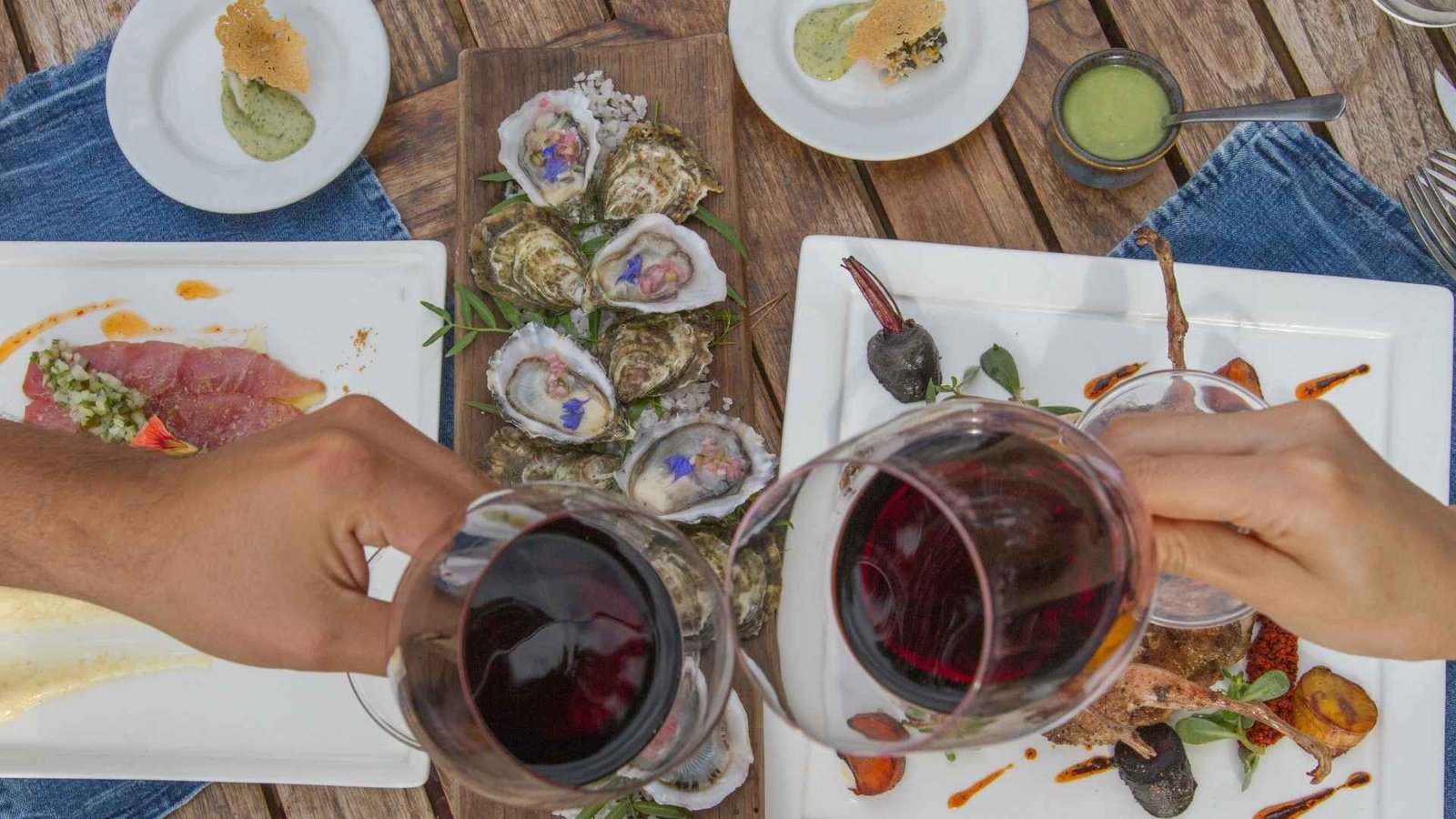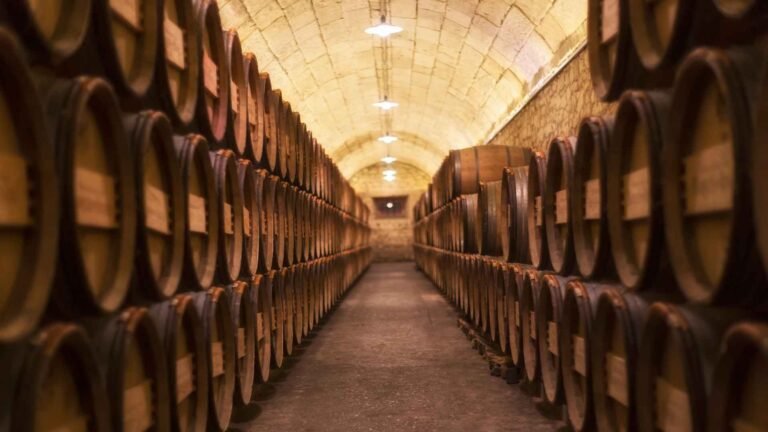In general, young wines are fresher and more fruity, they have an intense acidity. Over time, they lose their fruity expression and freshness. The ageing wines gain aromatic complexity.
YOUNG WHITES It’s recommended to consume them within a year or two of their harvest, they have an accentuated acidity, fruity and floral aromas. They are light, approachable, simple, direct wines, easy to drink and without barrel ageing. They are recommended for appetizers, entrees, salads, meals with citrus touches and outstanding acidity, fresh and simple dishes, ceviches, white and lean fish, poultry without sauces, sushi and seafood.
WHITE WITH LITTLE AGING They are medium-bodied wines, more complex than young wines, with more balanced acidity, thanks to their short ageing in barrels, they have more storage capacity. The barrel ageing gives the wine toasted and spicy aromas. Some may have had a pre-fermentation maceration to obtain a greater aromatic display and greater body. They are recommended for foods with acidity but also with unctuous structure, white meats (fish and poultry) with sauces, rice with vegetables, pasta with creamy sauces or cheese, gratin and grilled vegetables.
WHITE WITH STRUCTURE AND AGING These are wines that remain in the barrel for a time, which allows them to have long ageing in the bottle. The aged whites have a lot of body. Also, due to the passage through malolactic fermentation, they display aromas of butter and a creamier, unctuous texture. The tertiary aromas of wood, cocoa, toast, vanilla, leather, cloves, etc. are very present giving a greater aromatic complexity to the wine. It’s recommended to pair this style of whites with stuffed pasta and creamy sauces, fatty river and sea fish (black hake, pink salmon), poultry cooked for a long time and with sauces that add volume.
YOUNG REDS They are fresh, with high acidity, fruity, light, with low tannic load and without barrel aging. They are simple, direct wines. Young reds are recommended for pairing lean cuts of beef, light meals, simple preparations, unfilled pasta with tomato sauces, pizzas, bruschettas, white meats (chicken and fish) in casserole-type preparations and semi-hard cheeses.
REDS OF MEDIUM COMPLEXITY They have a medium body, more present tannins and display some tertiary aromas derived from short ageing. They are recommended for foods with greater structure, pasta filled with darker sauces, meat stews, roast meats and fattier cuts of meat.
CRIANZA RED They have great aromatic complexity and a lot of structure. Its acidity is balanced, the aging aromas (wood / vanilla / tobacco / leather / coconut / cloves / etc.) are usually very intense. They express aromas of butter, yoghurt, cream derived from malolactic fermentation. For this ageing, they gain more storage capacity. Crianza red wines are recommended to pair more complex meals, with long preparations, elaborated meats, game meats, lamb, sauces with mushrooms.
ROSES They are generally young wines, fruity, floral, very aromatic, dry, without residual sugar, light or medium-bodied. The acidity in rosé wines is marked, they have more body than young whites but less than aged whites. The demand for rosé wines is increasing internationally, they have always been widely consumed in the Mediterranean. It’s recommended to consume them within a year or two of their production to enjoy them at their best moment. They pair very well with starters, appetizers and main dishes in simple preparations, pasta or rice with vegetables and seafood, salads, sushi, ceviche, gravlax, grilled pink salmon, cold cuts, pickled, white meats (poultry / fish), sweet and sour preparations, pork, entrails, tomato preparations, fish soups, fish or vegetable tempuras, Chinese and spicy food.
SWEET WINES They have a high residual sugar perceptible on the palate. Added to this, they are usually made with grapes with high sugar content. This style of wine pairs very well with some cheeses such as blue and creamy (contrast pairing) and with desserts. Fortified wines, on the other hand, with the addition of distilled wine, pair very well with dark chocolate, nuts, dried or candied fruits and nougats.




